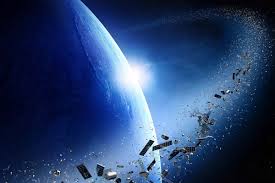About 1000 kilometres above Earth’s surface, two old spacecraft have narrowly avoided a collision.
Source: New Scientist
If they had hit one another, the smash-up could have created a spray of debris that would be extremely dangerous for other satellites and could set off a chain reaction of collisions.
The two objects are a Soviet Parus navigation satellite launched in 1989 and a Chinese rocket booster launched in 2009. Neither has any method of propulsion onboard, so there is no way to steer them away from one another.
“Nowadays that is rarer, and typically you would have some propulsion on the satellite so that at the end of the mission you would lower its orbit enough so that it will re-enter and fall into the sea or burn up,” says Jonathan McDowell at the Harvard-Smithsonian Center for Astrophysics. But there are plenty of these older objects in orbit with no way to prevent them from smashing into each other.
LeoLabs, a company that tracks space debris, predicted that the two objects would pass within 12 metres of each other on 16 October, putting the chance of a collision at higher than 10 per cent. Thankfully, this seems to have been avoided, says the firm.
Such a collision would have reduced both spacecraft to clouds of shrapnel hurtling through orbit and potentially smashing into other satellites.
“If you have a collision, the debris pieces end up in these elliptical orbits where they cross a lot of altitude lanes,” says McDowell. “It is a bit worrying when you have something like that – it doesn’t just stay safely in its lane.”
Part of the fear is that a debris cloud like this could set off a scenario known as the Kessler syndrome, where the debris keeps hitting other satellites and causing more debris in a sort of domino effect of destruction.
Close passes like this occur once or twice a year, with actual collisions only happening about once a decade, McDowell estimates. But as we continue to launch an ever-increasing number of satellites, they could start happening more often. “Unless we act, this problem is only going to get worse,” he says.
If we don’t stop adding heaps of space junk to orbit and start cleaning up our old messes, satellite collisions could become commonplace.
Source: New Scientist

































Leave a Comment
You must be logged in to post a comment.